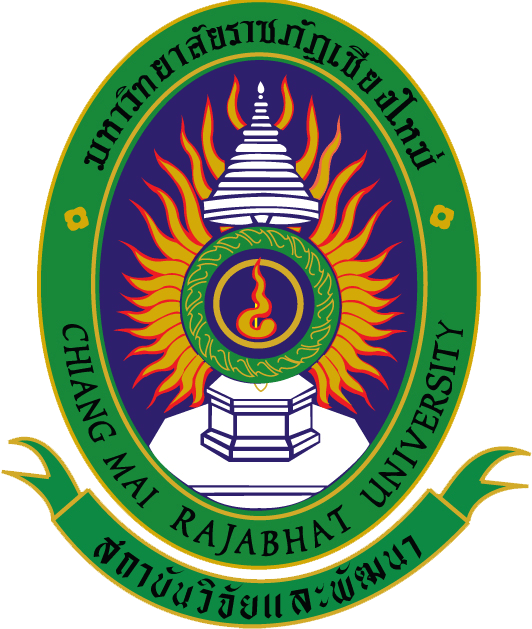
ระบบสารสนเทศงานวิจัย สถาบันวิจัยและพัฒนา มหาวิทยาลัยราชภัฏเชียงใหม่
Research Information System(RIS)
การใช้เทคโนโลยีสารสนเทศเพื่อการสื่อสารและการเรียนรู้ของนักเรียนที่มีความบกพร่องทางการได้ยิน
รองศาสตราจารย์ธีรธร เลอศิลป์
คณะครุศาสตร์
คำสำคัญ :
เลขทะเบียน :
920-60-EDU-NRCT
บทคัดย่อ
การศึกษาครั้งนี้มีวัตถุประสงค์เพื่อศึกษาการใช้ และความคิดเห็นในการใช้เทคโนโลยีสารสนเทศเพื่อการสื่อสารและการเรียนรู้ของนักเรียนที่มีความบกพร่องทางการได้ยิน ทาการศึกษาในกลุ่มตัวอย่างนักเรียนที่มีความบกพร่องทางการได้ยินที่กาลังศึกษาระดับมัธยมศึกษาปีที่ 1 – ปีที่ 6 ในโรงเรียนโสตศึกษา จานวน 5 แห่ง โดยการสุ่มตัวอย่างอย่างง่ายจากกลุ่มนักเรียนที่มีความบกพร่องทางการได้ยินที่มีระดับการสูญเสียการได้ยินตั้งแต่ระดับ 70 เดซิเบลขึ้นไป จานวน 192 คน เครื่องมือที่ใช้ในการวิจัย ได้แก่ แบบสอบถามการใช้เทคโนโลยีสารสนเทศของนักเรียนที่มีความบกพร่องทางการได้ยินที่ผู้วิจัยได้พัฒนาขึ้น เก็บรวบรวมข้อมูลโดยนักเรียนที่มีความบกพร่องทางการได้ยินเลือกตอบจากแบบสอบถามด้วยตนเอง และมีล่ามภาษามือเป็นสื่อกลางในการสื่อสารระหว่างผู้วิจัย / ครูประจาชั้นกับนักเรียนที่มีความบกพร่องทางการได้ยิน ผลการศึกษาด้านการรู้จักเทคโนโลยีสารสนเทศ พบว่ารู้จักแอพพลิเคชั่นการสนทนาผ่านอุปกรณ์เคลื่อนที่ (เช่น ไลน์ เฟสบุ๊ค และข้อความหลังเฟสบุ๊ค) มากที่สุด รองลงมาคือ แอพพลิเคชั่นการสนทนาแบบเห็นหน้าต่อหน้า ตามลาดับ กลุ่มตัวอย่างส่วนใหญ่เป็นเจ้าของโทรศัพท์มือถือ/สมาร์ทโฟน และรองลงมาคือ โน้ตบุ๊ก ตามลาดับ ในขณะเดียวกันกลุ่มนักเรียนที่มีความบกพร่องทางการได้ยินมีแอพพลิเคชั่นเฟสบุ๊ค และไลน์ ตามลาดับ เมื่อพิจารณาถึงการเชื่อมต่ออินเทอร์เน็ตพบว่านักเรียนใช้โทรศัพท์มือถือ/สมาร์ทโฟนเชื่อมต่ออินเทอร์เน็ตมากที่สุด นอกจากนี้ผลการศึกษาจากปัญหาอินเตอร์เน็ตพบว่าอินเทอร์เน็ตความเร็วช้า สาหรับผลการศึกษาด้านการใช้เทคโนโลยีสารสนเทศ พบว่ากลุ่มตัวอย่างติดต่อกับผู้ที่มีการได้ยินปกติด้วยวิธีการพิมพ์ส่งข้อความทางเฟสบุ๊ค ไลน์ และการโทรศัพท์โดยการขอความช่วยเหลือจากคนที่มีการได้ยินปกติ ตามลาดับ ส่วนการติดต่อกับคนหูหนวกและคนหูตึงพบว่านักเรียนจานวนมากใช้การส่งข้อความทางไลน์ และแอพพลิเคชั่นการสนทนาแบบเห็นหน้า ตามลาดับ ในทางกลับกันกลุ่มตัวอย่างมีการใช้ศูนย์บริการถ่ายทอดการสื่อสารแห่งประเทศไทย (TTRS) หรือแอพพลิเคชั่น TTRS น้อยลง สาหรับเหตุผลในการใช้เทคโนโลยีสารสนเทศ พบว่านักเรียนตอบว่าเพื่อนแนะนาให้ใช้เพื่อการสื่อสารติดต่อกัน และเทคโนโลยีสารสนเทศจาเป็นต้องใช้ในการเรียนการสอนในชั้น เรียน ตามลาดับ ส่วนสถานที่ที่กลุ่มตัวอย่างมักใช้อุปกรณ์เทคโนโลยีสารสนเทศ คือที่โรงเรียน โดยนักเรียนส่วนใหญ่ใช้เป็นประจา/ทุกวัน ใช้มานานมากกว่า 4 ปี โดยมีวัตถุประสงค์ของการใช้เพื่อติดต่อพูดคุยทั่วไป และเพื่อความสะดวกในการติดต่อกับบุคคลอื่นๆ ตามลาดับ ผลการศึกษาในด้านความคิดเห็นเกี่ยวกับการใช้เทคโนโลยีสารสนเทศของนักเรียนที่มีความบกพร่องทางการได้ยิน พบว่าส่วนใหญ่มีความคิดเห็นด้านพึงพอใจต่อผลของการใช้ในระดับทั้งมากและปานกลาง โดยนักเรียนส่วนใหญ่เห็นด้วยในระดับมากว่าเทคโนโลยีสารสนเทศมีส่วนที่ทาให้เกิดการมีส่วนร่วมในกิจกรรมต่างๆ รวมถึงการสนทนากับเครือญาติและเพื่อนฝูง บนเครือข่ายสังคมออนไลน์ด้วยอุปกรณ์เทคโนโลยีสารสนเทศ
Abstract
The purpose of this study was to research the use and opinion of information technology for communicating with and learning of students who have hearing disability in schools for the deaf. This study used the stratified random sampling method. One hundred and ninety-two students with hearing disability from five schools for the deaf in northern and northeastern Thailand took part in this study. They were studying in the 7th-12th grade and had a hearing loss level of 70 decibels and more. Information technology was used as a research instrument for the communication and learning questionnaire, developed by the researchers. Data collected by students with a hearing handicap were selected by self-administered questionnaires. Thai sign language interpretation was the medium of communication between the researchers and teachers and the students with hearing disability. In terms of knowledge regarding information technology, it was found that most students knew about mobile applications, for example Line, Facebook, Messenger and Face-to-face conversation. At the same time, most of the students owned their cell phones/smartphones and notebooks. Furthermore, students with hearing impairments had Facebook and Line applications. These students mostly used their mobile phones/smartphones to connect to the Internet. However, a slow Internet speed was found to be a problem. Moreover, results regarding the use of information technology found that most of the students with hearing disability contacted people without by sending messages through Facebook and Line or using the phone to ask for help. Meanwhile, many students used Line and Face-to-face applications for contacting and conversing with other hearing handicapped people. On the other hand, the students used fewer Thailand Telecommunication Relay Services (TTRS) or TTRS applications. Reasons for using information technology in communicating and learning were through recommendations from friends of students, and information technology being required for learning and teaching in the classroom. Most students with hearing disability often use information technology devices at school. They also have used it in daily life for more than 4 years. In addition, the purpose of using information technology is to contact each other for general conversation, and convenience in contacting others. A study of opinions on the use of information technology by students with hearing impairment found that most respondents were satisfied with the results of both high and moderate levels of use. Most students agreed that a high level of information technology, with information technology equipment, contributed to participation in various activities, including conversation with their relatives and friends on social networking.
ไฟล์งานวิจัย
อยู่ในระหว่างการปรับปรุงเนื้อหา707 27 ส.ค. 2561
สำนักงานคณะกรรมการวิจัยแห่งชาติ (วช.)
196 Paholyotin Rd., Chatuchak, Bangkok 10900
0-2561-2445